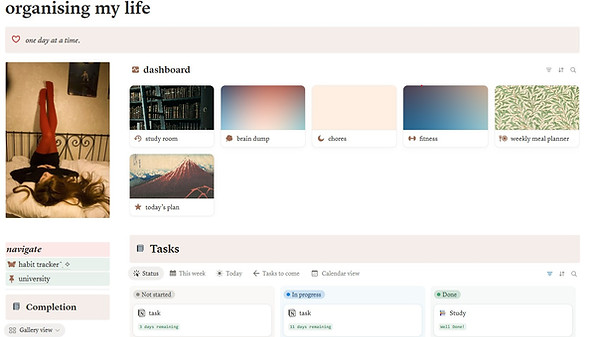
Contextual Report 2
This customisable Notion planner was designed for neurodiverse university students, with templates targeted towards organising tasks, tracking habits and manage personal and academic aspects of life. This project matters as it blends digital media design with social utility, ensuring tailored support for neurodiverse students.
In module two I explore template media and relevant theories to discover how structured, reusable systems strengthen utility. I demonstrate how research, iteration, modular thinking and community feedback informed design choices.
28/09/2025
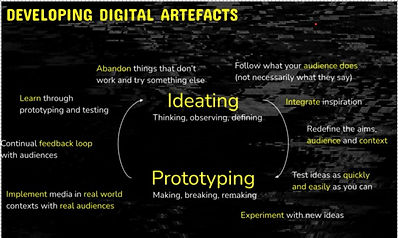
Module 2 guidance
In the framing stage, I established my digital artefact in ADHD executive-function research to maximise social utility. Drawing from Sibley et al.’s study on organisational skills, time management and planning difficulties, I identified the core areas my template can address, such as clear task segmentation. Parker's research influenced my decisions to include ready-to-use interventions such as daily checklists and motivational prompts to inform my modular block design. Guided by the module 2 insights, I mapped out potential features, like habit trackers, task lists and timing structures, and decided to form distinct Notion databases to separate personal and academic life. This research-driven framing ensured each area served a target need and formed a cohesive and reusable system.
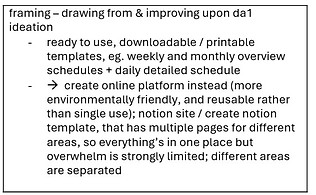
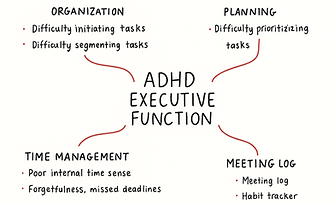
During prototyping, I used Pinterest boards and leading Notion templates to inform a more successful layout and style cues. I created three examples and relied on tutorials to make the most out of Notion’s potential- and I learned the best practices for default property settings and how to ease onboarding for my audience. One prototype's formula-driven habit tracker malfunctioned, and my limited knowledge of database relations and formulas led to further refining from existing templates’ data.

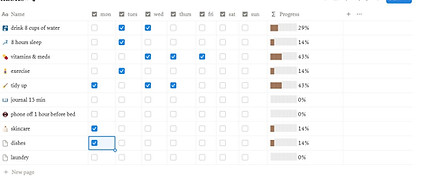
Through experimenting with minimalism versus maximalism, colour schemes and layouts I learned that clean, modular sectioning improved users’ ability to scan and adapt this tool, reducing cognitive load. Reducing clutter and overwhelm was key in adopting the final grid-based structure, enhanced through chunked information and clear labels. Each iteration refined the template’s modular structure, particularly in clarifying colour-coding conventions and experimenting with the designated sections that compartmentalise lifestyle areas. The module information reinforced the importance of clarification and user-friendly defaults, directing my organisation to become relative to its features.
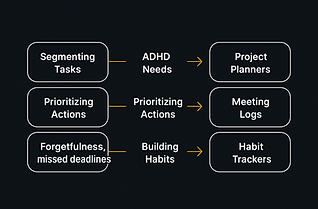
In the testing stage, I published the evolving template online, sharing it with the BCM114 Discord community and local university peers, gathering qualitative feedback on clarity, difficulties, perceived value and suggested features. This allowed me to understand unnecessary sections, leading me to streamline the layout, removing redundant areas, thus reinforcing the template’s social utility and tailoring for neurodiverse users. This stage strengthened my template in not only becoming scalable across workflows, but also in resonating with its community-based audience.
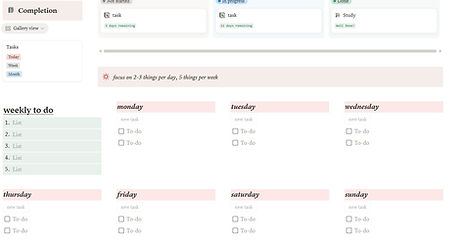
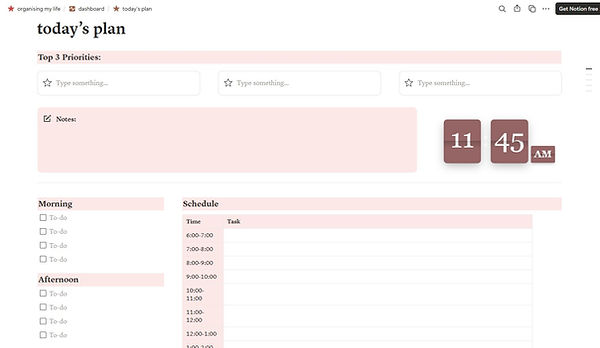
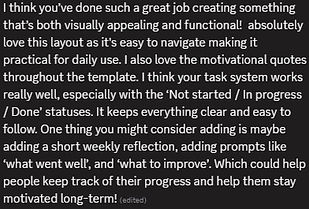
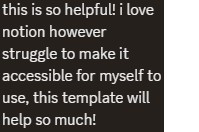
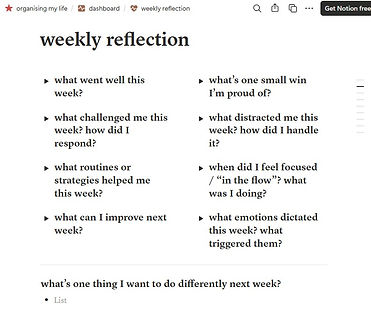
-Peer Discussion-
I participated in a peer discussion to delve into the local media exploration theme. Key insights included the importance of utilising the community around you, to create media that responds to your local society. Through focusing the development of our digital artefacts on the real people around us, rather than an abstract audience, we elevate the social utility of our work. This discussion influenced me to integrate features that directly respond to the needs of my peers, such as Wollongong specific support links and student events.
-Key Takeaways-
Whilst developing this project, I learned the significance of a modular framework, and the importance of iterating quickly with prototypes and peer testing to identify technical or usability issues. My understanding of social utility evolved to value adaptability at scale, prioritising simplicity. My key advice for this area would be to centre your design on community-driven insights whilst validating each decision through feedback loops, to maximise user relevance.
References
-
Sibley, MH, Campez, M, Perez, A, Morrow, AS, Merrill, BM, Altszuler, AR, Coxe, S & Yeguez, CE 2016, ‘Parent management of organisation, time management, and planning deficits among adolescents with ADHD’, Journal of psychopathology and behavioural assessment, vol. 38, no. 2, pp. 216-228.
-
Parker, HC 2000, Problem solver guide for students with ADHD: ready-to-use interventions for elementary and secondary students with attention deficit hyperactivity disorder, Specialty Press, Plantation, Florida.




